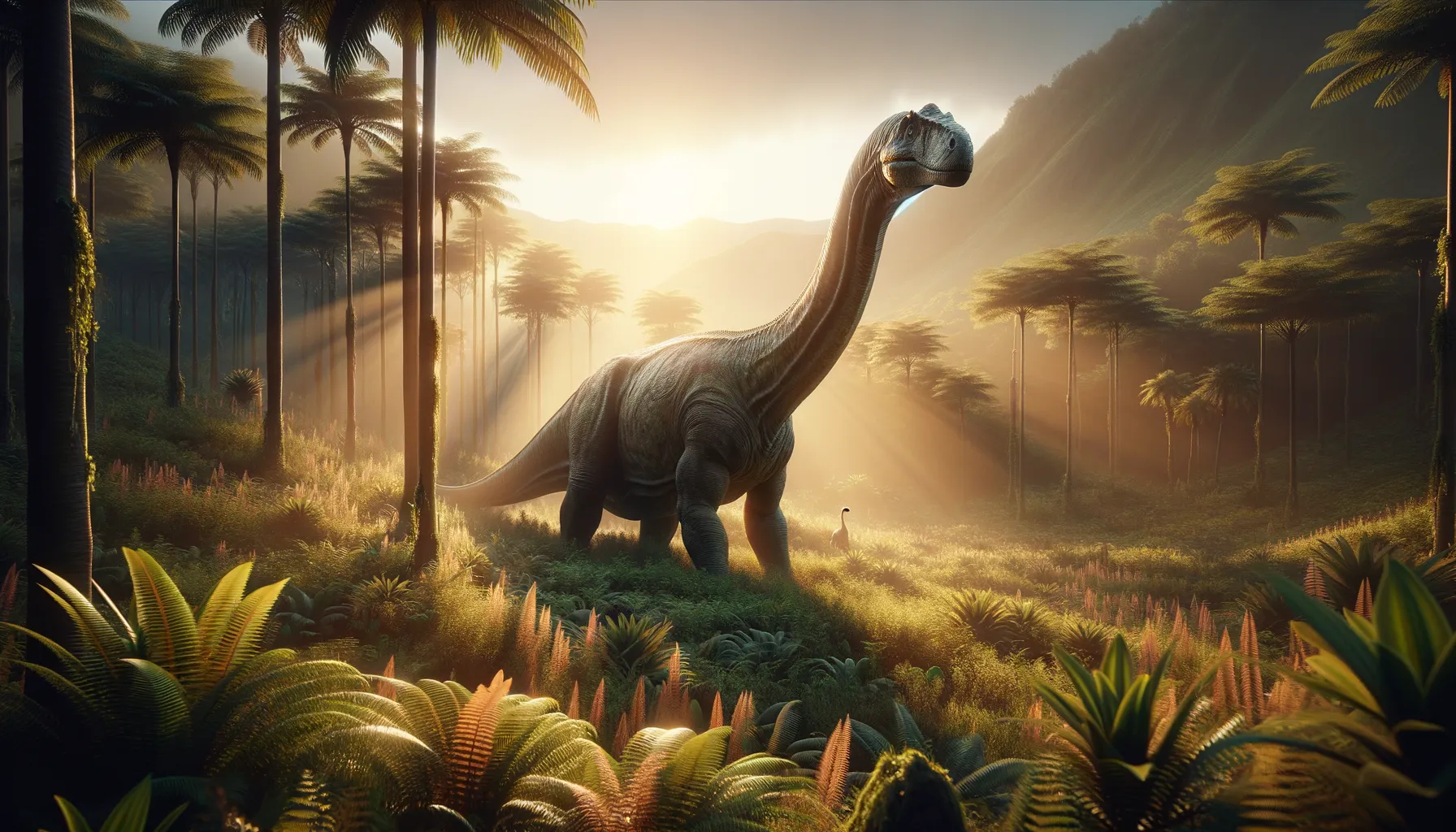
Wulagasaurus
Giant leaf-eater from ancient times.
Period
Cretaceous
Length
Roughly 30 feet long.
Height
Approximately 10 feet at the shoulder.
Weight
Around 2 to 3 tons.
Wulagasaurus was a large herbivorous dinosaur that roamed the Earth during the Late Cretaceous period. Known for its notable long neck and large body, it was part of the sauropod family. Its size helped it reach higher vegetation, providing a distinct advantage in its ecosystem. Fossils indicate it lived in what is now Northeast Asia, sharing its habitat with a variety of other dinosaur species that thrived in the region.
Diet
As a herbivore, Wulagasaurus primarily fed on plants. It used its long neck to reach vegetation that was out of reach for smaller animals. This diet consisted mainly of ferns, conifers, and other prehistoric greenery.
Hunting
Being a plant-eater, Wulagasaurus did not hunt. Instead, it spent much of its time grazing on vegetation. It had to move through vast areas to find enough food to sustain its large body.
Environmental challenges
Wulagasaurus faced environmental challenges such as changing climates that affected the availability of its food sources. It also had to cope with predators, mostly through its size and possibly living in herds for protection. The shifting landscapes of the Cretaceous period required it to adapt to different plant distributions over time.
Speed
Slow and steady, as expected for a large herbivore.
Lifespan
Estimated to live for several decades.
First discovery
First discovered in northeastern China in 2001.
Fun Facts
- Wulagasaurus was a plant-eating dinosaur that roamed Asia during the Late Cretaceous period.
- It belonged to the group of dinosaurs known as hadrosaurs, which are often called 'duck-billed dinosaurs' due to their distinctive snouts.
- The fossils of Wulagasaurus were first discovered in the Heilongjiang Province of China.
- Wulagasaurus is known for its long, powerful tail which helped maintain balance while it roamed the ancient forests.
- It had a unique feature where its front limbs were shorter than its hind limbs, aiding in its movement.
- Despite its massive size, Wulagasaurus primarily fed on vegetation and had specialized teeth for grinding plants.
- Wulagasaurus lived alongside other dinosaurs like theropods, which were meat-eaters of that time.
Growth and Development
The growth of Wulagasaurus was relatively rapid to reach a size large enough to deter predators. Its development involved growing a strong skeletal structure to support its massive body. Such growth demanded a constant intake of nutrients found in the vegetation of its environment.
Habitat
Wulagasaurus lived in a region that was likely lush with plant life, crucial for its survival as a herbivore. The area was surrounded by rivers and forests that provided both food and water. The climate was warm, which supported a variety of plant species Wulagasaurus could feed on.
Interaction with other species
While it was a peaceful creature, Wulagasaurus would have shared its habitat with both predators and other herbivores. It interacted with other species both as competitors for plant resources and as potential targets for large carnivores. Its size likely gave it dominance over smaller herbivores in accessing food resources.
Natural lifespan
Wulagasaurus naturally lived for several decades, barring predation or disease.
Reproduction
Like other dinosaurs, Wulagasaurus likely laid eggs, which it possibly buried to protect from predators. The young hatched and grew rapidly, gaining size to improve their chances of survival. Parental care might have included guarding the nesting area.
Social behaviour
Wulagasaurus might have lived and moved in herds, which provided protection against predators. Social interactions could include communicating to locate food resources or warn of danger. Such behaviors would benefit the group through shared vigilance.
Fossil locations
Fossils of Wulagasaurus have been found primarily in northeastern China. These discoveries give insights into its anatomy and lifestyle during the Cretaceous period. This region has provided a rich site for various dinosaur fossils, including sauropods like Wulagasaurus.
